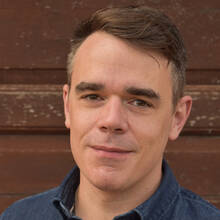 Our plane touched down in Peru late at night, so on the bus ride to Canto Grande, the neighborhood in which we spent our spring break, I was able to see only the outline of the mountains against the black sky, scattered with some light bulbs ascending up their slopes. It wasn’t until the hot morning sun illuminated the landscape that I was able to understand why we had traveled from New Haven to Lima.
Our plane touched down in Peru late at night, so on the bus ride to Canto Grande, the neighborhood in which we spent our spring break, I was able to see only the outline of the mountains against the black sky, scattered with some light bulbs ascending up their slopes. It wasn’t until the hot morning sun illuminated the landscape that I was able to understand why we had traveled from New Haven to Lima.
Canto Grande, a neighborhood in the San Juan de Lurigancho district of Lima, has seen significant economic improvement in recent years, but it remains relatively poor, especially by Western standards. It is common for people in this hot and arid area to live in huts on the mountainside, with whole families living together in one room. Running water is just now being installed in many places.
I was with a group of students and a Catholic chaplain from the Saint Thomas More Chapel at Yale University, and we volunteered for nearly two weeks in local schools run by priests of the Congregation of Holy Cross. One of the schools, part of the Jesuit created Fe y Alegria network, provides education for over 2,000 students, in two different shifts, five days per week. Parents send their children to this quasi-public school knowing that education is the only hope for their kids to escape the crushing cycle of poverty. A good education could be the difference between staying in a hut in Canto Grande, or, getting a decent job either in the neighborhood, or, if they are lucky, in posh downtown Lima.
The Catholic Church has particular credibility in this area of Peru because of the commitment that priests showed to the poor during the brutal years when a Maoist terrorist group, the Shining Path, went on a quest to overthrow government. Priests and religious stood by the people when the local government and police did not, and as a result, the Church enjoys the support of the population today. This is evident in the vibrancy of Catholic life in the area. The region we visited is one parish that serves over 200,000 people. It is divided up into 19 separate chapels, each one administered by a lay-board, many led by women, who work closely with the one pastor. Humble yet beautiful, these chapels offer Mass each week, and many provide essential services that cannot be found elsewhere.
 Attached to one chapel is Yancana Huasy, one of only a few schools devoted to serving special needs children in this area. Peru has an unusually high percentage of children born with Downs syndrome and other conditions, but many of these children receive no care or education because of the taboo nature of their situations in Peruvian society.
Attached to one chapel is Yancana Huasy, one of only a few schools devoted to serving special needs children in this area. Peru has an unusually high percentage of children born with Downs syndrome and other conditions, but many of these children receive no care or education because of the taboo nature of their situations in Peruvian society.
The experience of visiting the poorer parts of a developing nation offered me insight into a new culture and our own society. Life certainly is harder down there, but the joy and vibrancy I saw in the faces of the children with whom I played on the dusty playground told stories of hope and joy. In terms of our own culture, I see our excess and I struggle to understand how there can be such disparity among peoples. But I think there is also a warning coming to us from Peru, where downtown Lima shimmers with all the amenities of modern life while the outskirts are, literally, dirt poor. Peru’s economic society is incredibly stratified, and the result is poverty like nothing we have in the United States. At home, as the gap widens between the rich and the poor, we should remember that it is not sustainable for one group to dominate another, and that working toward the commonweal is the only way to maintain a just society. It appears that someday Peru may get there, and here we must recommit to this vision of shared prosperity.
Michael O’Loughlin






